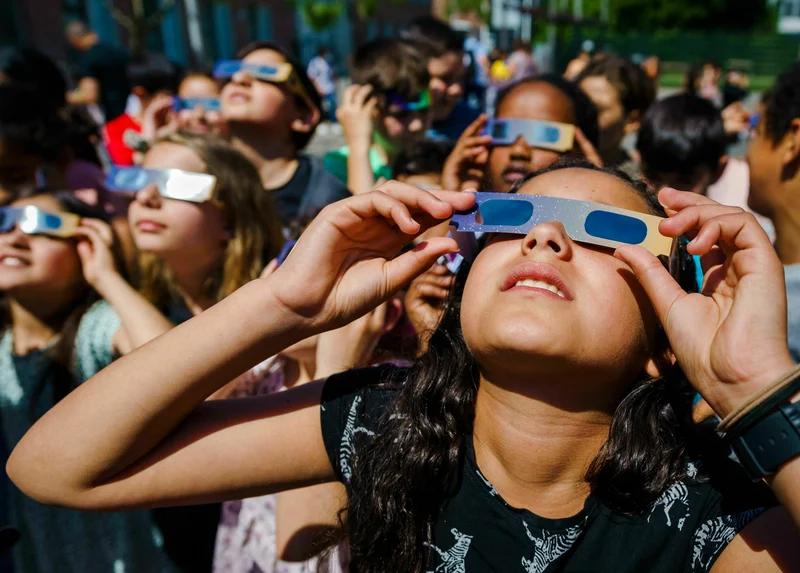Here's how you can see Saturday's 'ring of fire' solar eclipse


Astronomers and star-gazers are preparing for the annular solar eclipse happening in the daytime sky Saturday.
An annular eclipse occurs while the moon is near or at the furthest point in its orbit around the Earth.
The "ring of fire" effect happens when the moon, which appears smaller in the sky because it's further away from us, passes directly in front of the sun.
Want to take in the view? Here's what you need to know to see the eclipse:
Where and when you can see the eclipse
Viewers across the contiguous U.S. and at least part of Alaska will be able to see Saturday's solar eclipse, according to NASA .
Most areas will experience a partial eclipse, in which only part of the moon covers up the sun, making the star look like it's had a bite taken out of it.
The annular solar eclipse will be a special treat for viewers in parts of Oregon, California, Nevada, Utah, Arizona, Colorado, New Mexico and Texas.
In the U.S., it will begin in Oregon at 9:13 a.m. PDT and end in Texas at 12:03 p.m. CDT. (The annular eclipse will also be visible in parts of Central and South America.)
Several U.S. cities will be in the path of annularity. The eclipse will be visible in Eugene, Ore., starting at 9:16 a.m. local time; in Albuquerque, N.M., beginning 10:34 a.m. local time and in San Antonio, Texas, around 11:52 a.m. local time.
Don't look at the sun — and other tips for safe viewing
Let's get this one out of the way first: It's not safe to look directly at the sun. Because the sun is visible during a partial and annular solar eclipse, it's important to protect your eyes.
"Eclipse glasses" that have specialized solar filters are one way to safely view the eclipse. Your everyday sunglasses won't cut it.
You can also use an alternative viewing device like a pinhole projector to see the eclipse without looking right at it.
It's also unsafe to look at the sun or the eclipse through an unfiltered camera, binoculars or a telescope. If you want a keepsake, you can take photos of the event, but ensure you have a solar filter so you don't damage your camera.
And don't forget about your skin. NASA recommends that anyone spending hours in direct sunlight viewing the eclipse should wear protective clothing, a hat and sunscreen.
Shoot, I missed it! When's the next one?
Don't despair!
Saturday's eclipse may have passed you by, but another major eclipse is just half a year away.
A total solar eclipse will occur on April 8, 2024, when the moon will completely cover up the sun, and viewers from Maine to Texas will be in the path of totality.
You may want to mark your calendars for this one. The next total solar eclipse visible from the contiguous U.S. won't occur until Aug. 23, 2044.



If you must view it, copy Melania and not the prime idiot on her left.